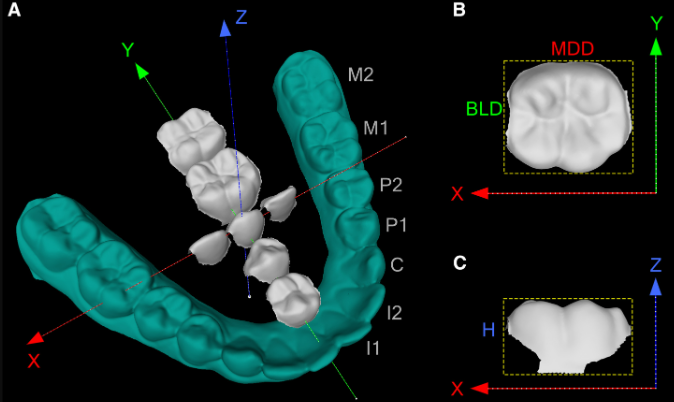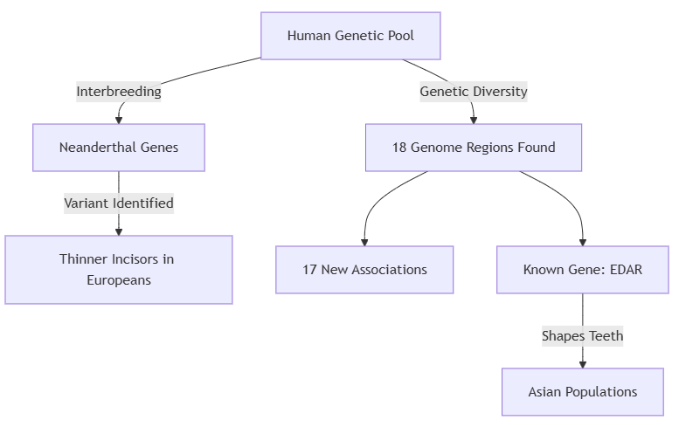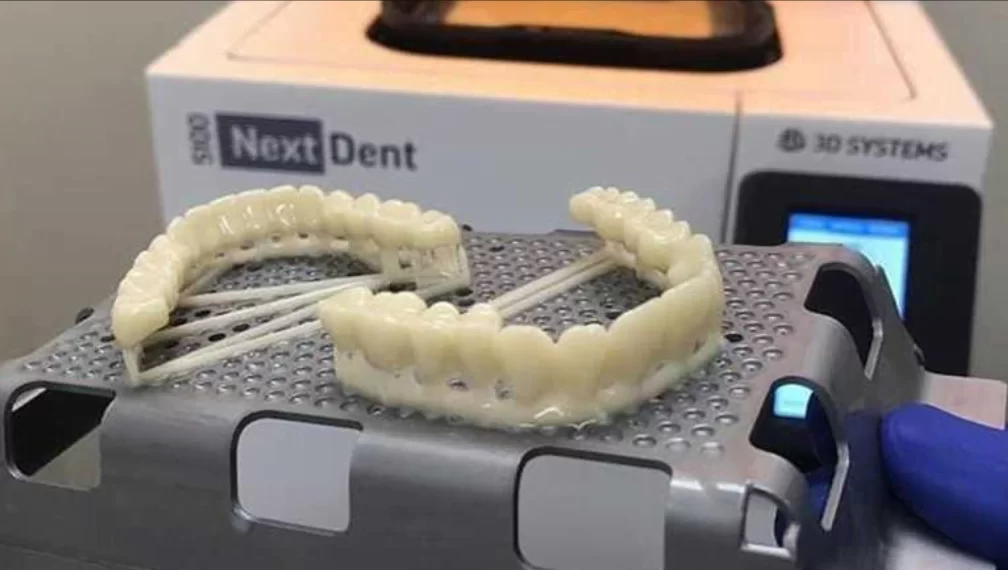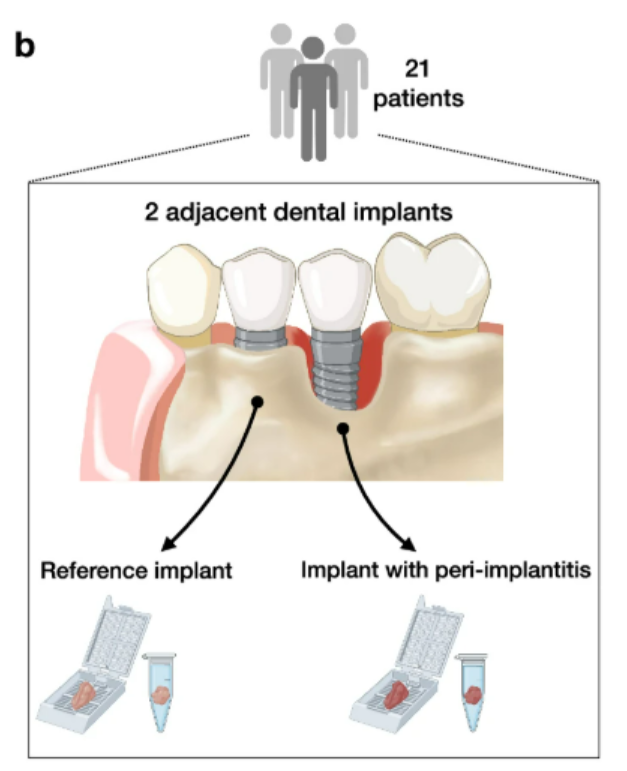Identified genes determining the shape of teeth: another Neanderthal legacy
Recent research has identified genetic variants that determine the shape and size of human teeth, including a gene inherited from Neanderthals. These discoveries shed light on evolutionary history and reveal potential implications for medical and dental science.
The Genetic Blueprint of Our Teeth
Our teeth are more than functional tools; they are a rich archive of human evolution. By analyzing tooth shapes and sizes, scientists have discovered genetic pathways that influence dental development. The findings, published in Current Biology, detail significant differences in dental dimensions across ethnicities, with an emphasis on a Neanderthal-linked gene found in European populations.
The Study: Analyzing Teeth at the Genetic Level
Researchers conducted a genome-wide association study (GWAS) on 882 individuals of mixed European, Native American, and African ancestry. Dental crown measurements were obtained from 3D scans of dental plaster casts, providing precise data on the visible portions of teeth. These measurements were then compared to genetic profiles, using multiomics—a data-integrative approach to link genetic variations with physical traits.

Procedure for 3D phenotypic data collection. Dental crown measurements were obtained for each tooth, after segmentation of a 3D image from a full dental arcade. In (A) are shown example 3D images of a dental cast and segmented teeth. In turquoise is shown the unsegmented dental arcade, with different tooth classes identified (I, incisors; C, canines; P, premolars; M, molars). Within the arcade are shown (in white) examples of individual teeth, obtained after segmentation of the dental arcade. The segmented teeth are aligned along standardized 3D coordinates, from which the mesiodistal diameter (MDD, y axis), buccolingual diameter (BLD, x axis), and height (H, z axis) measurements are obtained. For illustration, example teeth have been slided along the x or y axis. In (B) and (C), we show the planes from which MDD, BLD, and H measurements are obtained for each tooth. Current Biology/ Qing Li / 12 December 2024 / GWAS Catalog: GCP000906
Key discoveries include 18 genome regions associated with tooth dimensions, 17 of which were novel. One region linked specifically to Neanderthal heritage was found to influence the thickness of incisors. This variant, unique to those of European descent, contributes to thinner front teeth.
Neanderthal Influence on Modern Teeth
One of the most intriguing findings of the study is the Neanderthal-derived genetic variant that impacts tooth size. The variant, present only in individuals of European ancestry, is believed to have entered the human gene pool through ancient interbreeding. This insight emphasizes how interspecies interactions shaped the modern human genome and affected dental morphology.
Diagram: Tooth Size and Genetic Influence
The Role of EDAR and Other Genetic Pathways
The study highlights the role of the EDAR gene, previously known to influence incisor shape in East Asians. New findings reveal its impact on the width of all teeth, suggesting a broader role in dental development. These insights underscore the interplay between genetic factors and evolutionary pressures.
Evolutionary and Medical Implications
Teeth are a valuable resource for studying human evolution due to their durability and representation in the fossil record. This study not only helps trace our evolutionary history but also opens new avenues in dental health. Understanding the genetic basis of tooth size and shape could lead to advancements in diagnosing and treating dental conditions. For instance:
- Genetic testing could identify predispositions to dental anomalies.
- Gene therapies might address developmental dental disorders in the future.
Unanswered Questions and Future Directions
While this research uncovers the genetic underpinnings of dental morphology, it also raises questions about evolutionary selection. Did these genes offer dental health advantages, or were they byproducts of other traits? Further studies are needed to explore these possibilities and deepen our understanding of human evolution.
This research bridges the past and future, offering a glimpse into the genetic legacy of our ancestors while paving the way for innovative medical applications. By unlocking the secrets of our teeth, we gain a deeper appreciation of our shared human story.
Sources
- ScienceDaily – Genes that determine tooth shape identified – December 12, 2024
- Current Biology – PITX2 expression and Neanderthal introgression in HS3ST3A1 contribute to variation in tooth dimensions in modern humans – December 12, 2024








